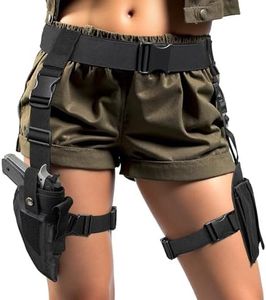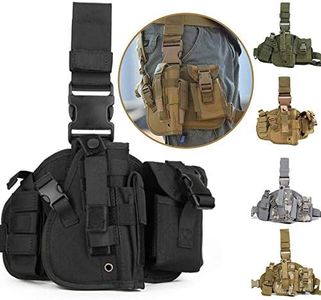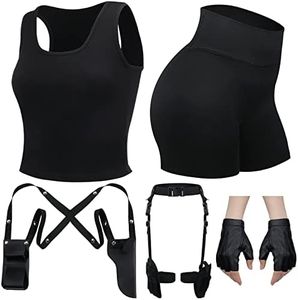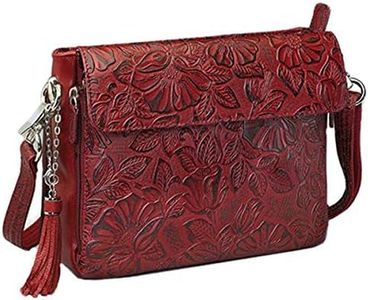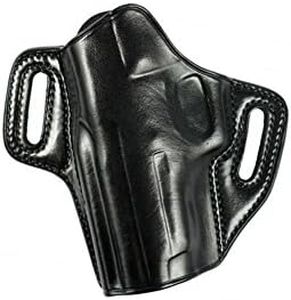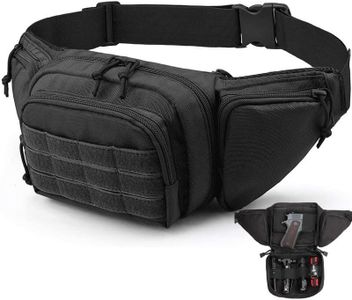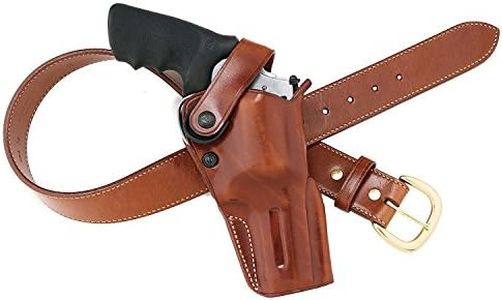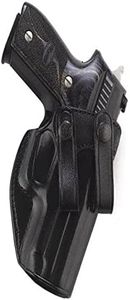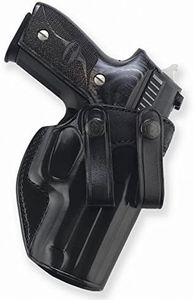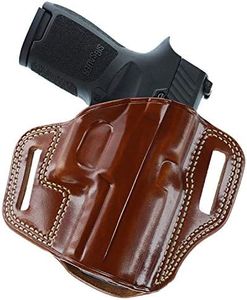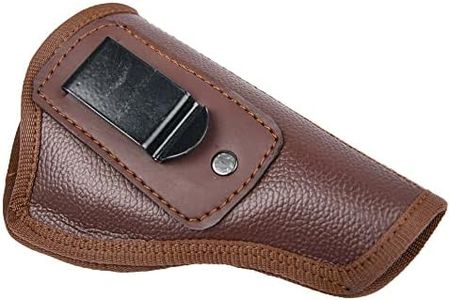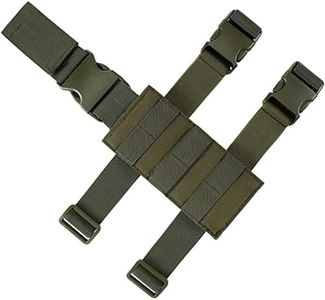We Use CookiesWe use cookies to enhance the security, performance,
functionality and for analytical and promotional activities. By continuing to browse this site you
are agreeing to our privacy policy
10 Best Holster For Women
From leading brands and best sellers available on the web.Buying Guide for the Best Holster For Women
Choosing a holster as a woman involves balancing comfort, safety, concealment, and quick access. Since body shapes and clothing styles vary a lot, it's important to consider where and how you want to carry your firearm. Think about your daily activities, your wardrobe preferences, and situations in which you'll need discreet or accessible carrying. Remember, the best holster for you will empower confidence while keeping safety at the forefront.Carry PositionCarry position refers to where the holster is worn on your body. This is important because it affects how comfortable and discreet the holster will be, as well as how quickly you can reach your firearm. Common positions include inside the waistband (IWB), outside the waistband (OWB), appendix, bra, ankle, belly band, shoulder, and purse holsters. For example, IWB holsters are generally more discreet but can feel tight, while purse holsters offer off-body carry but require extra caution to ensure quick and safe access. Choosing the right carry position depends on your typical clothing, your body shape, your speed requirements, and your comfort level.
Holster MaterialThe material of a holster affects its comfort, durability, and retention capabilities. Common materials are leather, Kydex (a type of hard plastic), nylon, and hybrid combinations. Leather is comfortable and molds to your shape over time, but can wear out. Kydex offers a rigid and secure fit, making it easy to reholster, but may feel less comfortable against the body. Nylon is lightweight and flexible, but often offers less specific firearm retention. Think about if you prioritize comfort over durability or vice versa, as well as how much you sweat or move around throughout the day.
Retention SystemRetention refers to how securely the holster holds your firearm in place. This is crucial for safety, especially during physical activity. Retention systems can be passive (just relying on the shape and friction of the holster) or active (using mechanical straps, catches, or buttons). Passive retention is simpler and quicker for drawing, but might be less secure when moving, while active retention adds security but may slow down your draw. Your choice hinges on your daily movements—if you run or bend a lot, higher retention might be needed; if you prioritize quick access, look for efficient but secure passive options.
ConcealabilityConcealability is about how well the holster hides the firearm under your clothing. This matters for discretion and personal safety. Slim, form-fitting holsters are better for hiding under tight clothing, while bulkier options work under loose garments. Additionally, placement like ankle or bra may be preferable with certain outfits. Consider what you typically wear and what level of concealment you need to avoid printing (visible outline of the firearm).
Adjustability and FitAdjustability covers how well the holster can be customized for your body and firearm. Holsters with adjustable cant (angle), ride height, and retention can better match your size and comfort preferences. Fit is important both for your specific firearm model (to prevent wobbling or sticking) and for your body type. Make sure the holster is designed for both your gun and your preferred carry location. If you have more unique needs (e.g., petite frame, left-handed), look for holsters offering ample adjustment options.
ComfortComfort determines how likely you are to wear your holster consistently. Factors such as padding, breathability, weight, and edges all play a role. Some holsters include sweat guards or soft linings for comfort during long wear, which can be especially useful in hot weather or for all-day carrying. Assess if you’ll be wearing your holster while active or sedentary, and choose comfort features that fit your lifestyle.
Ease of DrawEase of draw refers to how quickly and smoothly you can access your firearm from the holster. This is crucial for emergency situations. Holsters that allow for a full grip on your firearm and have an open top are generally quicker, but you don’t want to sacrifice too much retention. Practice drawing from your holster, considering your normal daily clothing, to make sure it won't snag or slow you down. Think honestly about how fast you need to access your firearm, and ensure the holster makes this realistic for you.
